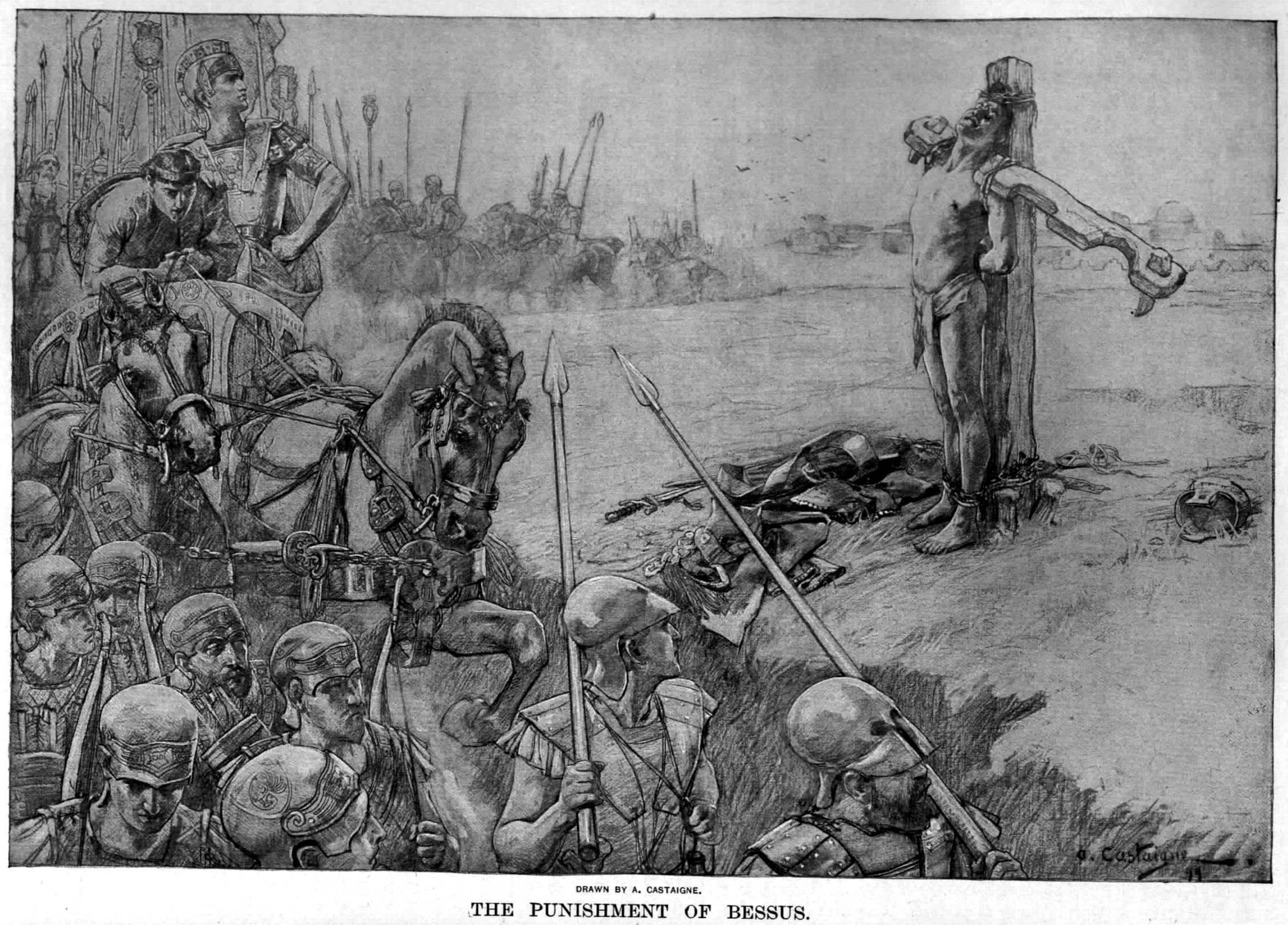rupol2000
Gold Member
- Aug 22, 2021
- 18,215
- 2,628
- 138
- Banned
- #1
I think it's Artaxerxes Bess. He died a martyr's death at the hands of the Macedonians, and the plot of his execution is similar to the execution of Christ.
The biblical story itself is not reliable. The meaning of the concept of crucifixion is in tearing the body. Most likely there was no such execution as it is described in the Bible in general. No one would waste material on criminals just to hang them there.
In Persia, there was such an execution: two boards slowly tore the body, this is the crucifixion.
That is why in the Slavic language the name of the crucifixion has the semantics of "tearing" - "raspyatiye"
There are statues hanging on a pole. This is a separate punishment that Bess was subjected to before he was crucified.
The pillar and the cross are different pictorial subjects.
The biblical story itself is not reliable. The meaning of the concept of crucifixion is in tearing the body. Most likely there was no such execution as it is described in the Bible in general. No one would waste material on criminals just to hang them there.
In Persia, there was such an execution: two boards slowly tore the body, this is the crucifixion.
That is why in the Slavic language the name of the crucifixion has the semantics of "tearing" - "raspyatiye"
There are statues hanging on a pole. This is a separate punishment that Bess was subjected to before he was crucified.
The pillar and the cross are different pictorial subjects.

